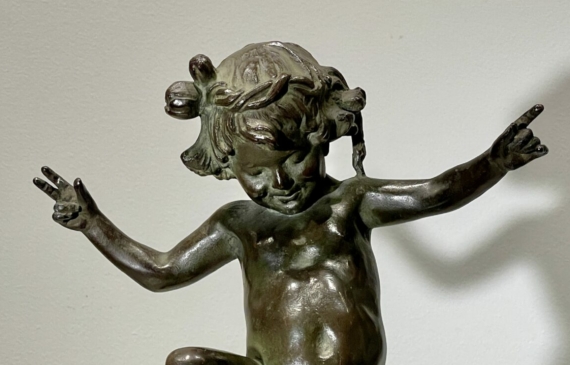
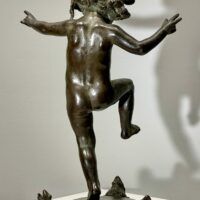
Janet Scudder (American, 1873-1940)
Frog Baby Fountain, 1901
Bronze, dark brown patina
12 ⅛ H. x 8 W. x 5 ¾ D. inches
Signed at rear vertical edge of self bronze base: JANET SCUDDER © GORHAM CO.FOUNDERS/ QUI / Gorham cipher
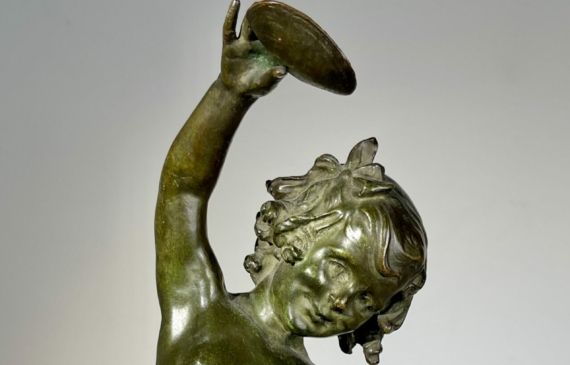
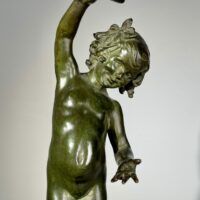
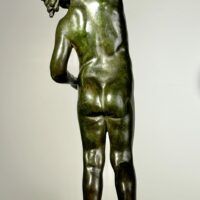
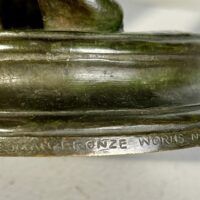
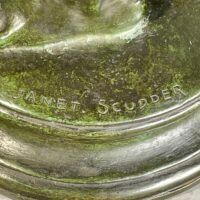
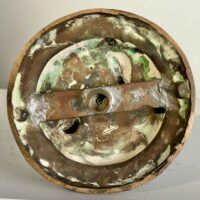
Janet Scudder (American, 1873-1940)
Shell Baby, circa 1915
Bronze, dark green patina
15 ¼ H. x 5 ½ W. x 6 ½ D. inches
Signed on base: JANET SCUDDER
Inscribed on base: ROMAN BRONZE WORKS N – Y –
Janet Scudder was born in Terre Haute, Indiana in 1869 into an impoverished family plagued by misfortune. With help of friends and relatives she enrolled in local art classes and later was admitted to the all-male institute through the influence of Peddle’s father, who was on the board of the school.
In 1887 she entered the Cincinnati Academy of Art. Scudder experimented her first year with drawing and decorative design, but her first experience with clay changed her outlook. To help support herself, money was tight, she got a job as a wood carver (after taking woodcarving classes) making ornate mantles for the elegant homes in Cincinnati.
Her career and style took shape due to stints in the studios of Loredo Taft and Frederick Macmonnies between 1893 and 1896 and a number of years spent travelling as an artistic companion to a succession of American heiresses. As much as this helped her, she felt suppressed by the solemn statuary produced by her male colleagues and the monotony of living a luxury lifestyle and soon decreed “never to do stupid self-righteous sculpture – even if I had to die in the poorhouse” (Scudder, op. cit., p. 165).
For the Pan-American Exposition held in Buffalo, New York in 1901, Scudder contributed her Bar Association Seal (an 1898 commission), and other works. Back in New York she tried to make contact with Stanford White, of the renowned architectural firm McKim, Mead, and White. Scudder eventually succeeded in meeting White who, not only provided her with many commissions over the years, but who also purchased a version of Scudder’s Frog Fountain.
Janet Scudder’s career owes a debt of gratitude to the jubilant “Frog Baby” fountain in establishing her as a garden sculptor. The first casting was produced in Paris, which Scudder brought back to New York in hopes that it would help her secure patrons. Through a fortuitous meeting with renowned architect Stanford White, she sold him the sculpture for his Long Island estate. He was so thrilled with the purchase that he recommended her to a number of clients, establishing a fruitful working relationship between the two that led to Scudder’s recognition as a fountain and garden sculptor. She dedicated an entire chapter to this work in her autobiography, describing that inspiration for the sculpture occurred when a young boy wandered into her studio: “In that moment, a finished work flashed before me. I saw a little boy dancing, laughing, chuckling all to himself while a spray of water dashed over him. The idea of my Frog Fountain was born.” She enjoyed depicting children because of the vibrancy with which they carry out each movement, adding a dynamic aspect of youthfulness to her work.
From 1900 onwards she focused on joyous representations of children and youthful literary characters, often in the form of fountains, and swiftly found recognition and a steady stream of commissions. Around 1908-1913 she produced some of her best known work, such as The Tortoise Fountain, The Young Diana, and The Little Lady of the Sea, often during trips to Europe. Scudder equally sharpened her pen and tongue during this time, lashing out to dilettante woman artists, gender inequality, and dull art. A cast of The Seated Faun is in the Brooklyn Museum (inv. no. 26.184), dated 1924.